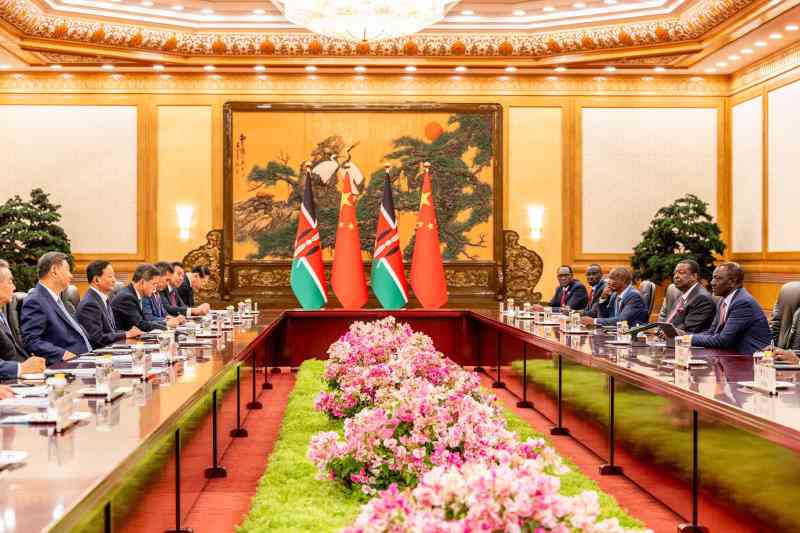Tsetse flies have without a doubt shaped Africa's landscape. They determine human settlements, delineate grazing fields and arable lands; subsequently spelling doom for human beings in areas where they inhabit, causing sleeping sickness epidemics.
Tsetse flies have attracted a lot of attention albeit sporadic in nature especially when they attack human beings. Ironically, despite these defining incursions, the tsetse problem remained neglected for over a century in the modern world until African heads of states and governments raised the red flag during the 2000 AU Summit in Lome, Togo.
This awakened the continent to the need for well-coordinated and trans-boundary tsetse eradication interventions through the Pan-African Tsetse and Trypanosomiasis Eradication Campaign (PATTEC) whose coordinating office is based in Addis Ababa, Ethiopia.
Kenya was among the first group of tsetse-infested countries to start implementation of PATTEC; which was piloted in Meru, Mwea, Faza, Pate Island, Lake Victoria (Lambwe Valley) and Lake Bogoria basin regions. Farmers in these intervention areas can give testimonies on livelihood change through tsetse eradication efforts.
In Emsos area in Baringo county, hundreds of exotic dairy animals and their crosses have been introduced in regions colloquially referred to us Nyalil buch (green for nothing). In Mwea, an area once known for relief food supplies is now a producer and exporter of food.
Thiba farm, with over one hundred dairy cows and goats, has been set up in an area initially infested by tsetse flies. On Faza islands, the residents have for the first time since independence kept a dairy animal after deliberate Government efforts to eradicate tsetse flies on the island. Ruma National Park, which is the only Kenyan home to Roan antelopes, yet listed in the Vision 2030 blueprint as a least visited park, is today abuzz with activity.
Based on these successes, the Kenya government domesticated PATTEC and established the Kenya Tsetse and Trypanosomiasis Eradication Council (KENTTEC). The council is mandated to coordinate all tsetse eradication activities in the country. Such is the type of deliberate effort that has seen countries like Botswana and Namibia increase their GDP through livestock production and this is the direction Kenya is headed with sustained tsetse and trypanosomiasis eradication efforts.
Recent reports on scientific research have pointed to a future without tsetse flies and their accompanying menace to humans, animals and food. While these predictions paint a rosy picture of future situations, we cannot afford to sit back and resign our fate to computer-derived forecasts; the battle must continue.
Indeed sub-Saharan Africa without tsetse will be a flourishing and beautiful place to be. It will mean that GDPs will soar and public health will improve; generally, things will be good because tsetse flies have denied the continent these good tidings. Africa must not sleep until it is tsetse free.
Tsetse eradication cannot happen on its own; it must be driven by deliberate government efforts. In the same breath, scientific forecast models have shown that the opposite can also happen with the climate change phenomenon. It has been shown that tsetse habitats will widen due to climate change. Field reports from farmers are already confirming this fact following the recent El Niño rains; which have caused flare-up of tsetse populations in areas considered free.
While this may not have been envisioned in our El Niño preparedness national plan, it is an emergency that the Government must deliberately tackle to safeguard the fragile livelihoods in these areas and the gains already made.
Losing camels, cattle, dogs and pigs among other animals to the tsetse-transmitted trypanosomiasis due to a tsetse flare-up after the El Niño would negatively affect the local communities. Thus, county and national governments need to intervene urgently.
Tsetse eradication is a deliberate effort whose gains outweigh the “enormous” input costs. Botswana and Namibia have already shown the continent a real forecast model of a country without tsetse flies; Kenya is heading in the same direction but we must commit to eradicate tsetse flies for a healthy, wealthy population.
 The Standard Group Plc is a
multi-media organization with investments in media platforms spanning newspaper
print operations, television, radio broadcasting, digital and online services. The
Standard Group is recognized as a leading multi-media house in Kenya with a key
influence in matters of national and international interest.
The Standard Group Plc is a
multi-media organization with investments in media platforms spanning newspaper
print operations, television, radio broadcasting, digital and online services. The
Standard Group is recognized as a leading multi-media house in Kenya with a key
influence in matters of national and international interest.
 The Standard Group Plc is a
multi-media organization with investments in media platforms spanning newspaper
print operations, television, radio broadcasting, digital and online services. The
Standard Group is recognized as a leading multi-media house in Kenya with a key
influence in matters of national and international interest.
The Standard Group Plc is a
multi-media organization with investments in media platforms spanning newspaper
print operations, television, radio broadcasting, digital and online services. The
Standard Group is recognized as a leading multi-media house in Kenya with a key
influence in matters of national and international interest.








